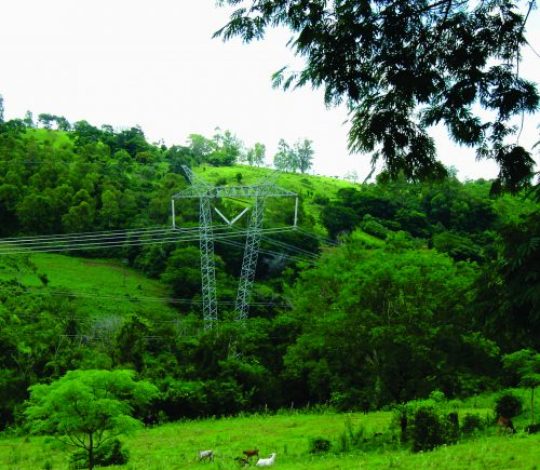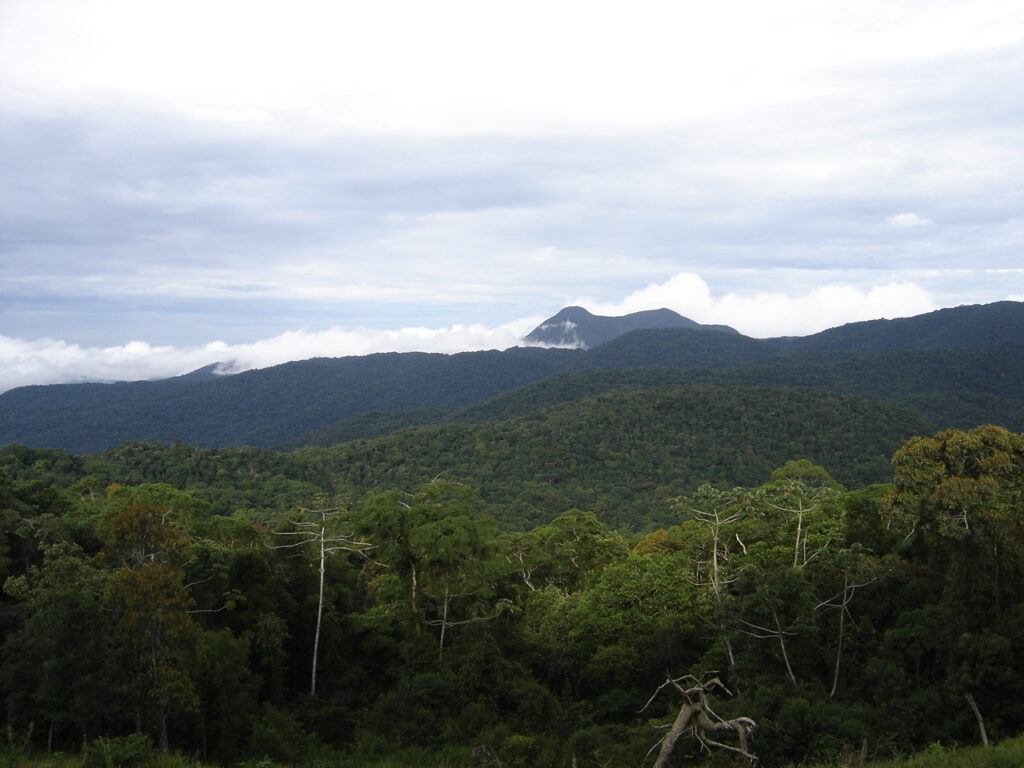Flora
Copel prioritizes generation, transmission and distribution-undertaking installation in anthropized areas, and it uses low-interference construction techniques in vegetation, in order to prevent and mitigate impacts in every planning, deployment and operation stage.
For high voltage transmission and distribution lines, the Company performs tower raising and cable laying by drone, decreasing right of way opening requirement, and opening service way, which, upon activity completion, shall not shave interference anymore, providing vegetation recovery in these locations.
In medium voltage distribution lines, the compact network use is prioritized to decrease tree-cutting requirement. Such actions intend to prevent vegetation cutting in deployment and maintenance stage.
Environment licensing constraints for power distribution line undertakings and substations related to vegetation suppression refer to Mandatory Forest Replacement and Mata Atlântica Offset, whenever applicable. There can be other planting restraints, indicated in cutting licenses and permits, including the ones set forth by Municipalities for tree cutting in urban area.
For energy generation and transmission projects, Forest Compensation Programs, Flora Rescue and implementation of Permanent Preservation Areas are implemented, as well as monitoring of forest suppression and restoration activities.
Vegetation Management
Concerning vegetation relevance in biodiversity maintenance, Copel fosters, in every undertaking planning, deployment and operation stage, vegetation management actions that aim at minimizing native vegetation suppression, rescuing and reallocating native species, collecting and donating seeds, following and controlling rare and endangered species official listings, as well as monitoring preserved, recovered or under recovery areas.
It should be highlighted that vegetation interventions are inevitable, as they aim at keeping minimum safety distances between energized cables and tree branches, decreasing power system accidental interruptions, preserving activity staff from personal injuries, eliminating risks originated from broken leads due to branch action, and protecting the population, not to mention safety and environment aspects related to the activity.

- Native Species
- Endangered Species
- Invader Exotic Species
To install and maintain undertakings, the native vegetation suppression occurs only by Forest Authorization or equivalent document, as per the environment laws and regulation in force.
In offset planting execution or with landscape purposes, the Company prioritizes local ecosystem native species use. The list of native flora species used in Copel GeT’s forest compensation projects can be accessed here.
In order to prevent that its generation and transmission projects from causing native species decrease in remainders and in areas under recovery, Copel sponsors vegetable species rescue and reallocation, especially epiphytes, and seed collection, which are donated education institutions and state environment agencies, fostering research and seedling production. Such actions end up preserving not only species diversity, but also genetic variability, which is a significant factor to assess the danger grade of each one.
Apart from tree-size species, which are subject to commercial interest due to predatory speculation, other vegetable species end up with a decreased presence in forest, and even though they do not have direct commercial interests on them, are more vulnerable to natural environment changes, as they require very specific conditions to be established, and they become rare in remaining native vegetation.
Thus, potentially endangered species control, in different biomes where Copel operates, is essential to drive rescue actions and vegetable coverage recovery in its undertaking region, in order to enable the biodiversity maintenance in the preserved and recovered areas in its assets.
As properties are chosen or layouts are set forth for undertakings, we attempt to prevent at most reaching endangered species, whether by changing layouts or using construction techniques.
To register and control flora-endangered species, internal lists created by cross-referencing data from forest inventories or monitoring and rescue programs in different enterprises are updated annually, with the following sources: the Official National List of Threatened Flora Species from the Ministry of Environment (MMA) and the Brazilian Institute of Environment and Water Resources (IBAMA) and the IUCN Red List.
Invader exotic species are the ones that, apart from being displaced from their natural occurrence area, end up quickly occupiyng the areas where they are introduced and are very aggressive when competing with native species for space, light and nutrients.
In Copel, actions aiming at invader exotic species eradication are performed, including Pinus spp., within undertaking and Conservation Unit surroundings. What is more, reservoir development to deploy power stations transforms grazing areas in Permanent Preservation Areas (APPs). The African grass species used as brazing, including brachiaria (that are extremely competitive) make the forest recovery process very arduous, demanding technique improvement for their elimination, as the use of quick-growth native species and forecast waste (nucleation) to contain the exotic species proliferation.
Species of flora included in the IUCN red list and in national conservation lists that occur in our areas and are the indirect target of conservation actions until 2024:
Flora
Note: It is worth noting that a species may appear in more than one threat category, depending on the list consulted. Cumulative data does not reflect the total for the current year.
Riparian Forests
Copel has more than 14 thousand hectares of Permanent Preservation Areas – PPAs around its reservoirs, which have been managed since 2005 by the Ciliar Forests Subprogram.
In the implementation of hydroelectric power plants, with the filling of reservoirs, previously anthropized and altered areas become APPs, requiring actions to protect and restore the native vegetation cover. The objective of the restoration and protection of the APPs is to comply with the environmental legislation in effect and with the requirements of the environmental licensing of Copel GeT’s undertakings.
Activities are carried out to diagnose the areas, analyze the most suitable restoration techniques for the specific conditions, aiming to subsidize the planning of implantation, maintenance, and monitoring activities. Among the implementation activities are the fencing of areas, planting of tree seedlings of native species, green manure, enrichment, direct seeding (muvuca), nucleation, and conduction of natural regeneration, among others.
In addition to the environmental benefits, the coverage of the APPs with native vegetation also provides functional benefits to the hydroelectric power plant reservoirs, such as the reduction of sediment carriage, avoiding silting and reducing margin erosion, and may also increase the water flow and increase their useful life.
The program aims to protect and restore the degraded APPs by adopting the most appropriate techniques for each situation, in order to accelerate the reestablishment of the ecological functions, expanding the connectivity between forest fragments and the genetic flow of fauna and flora, and also contributing to the maintenance and improvement of ecosystem services and climate regulation.


Urban Forests
Urban Forest Program provides quality seedlings for free and guidance to afforestation management within the city urban area. Deployed in 2009 and reformulated in 2015 by Copel environment and social responsibility area, it has already benefited around one hundred cities, by planting more than 60 thousand trees.
The goal is fostering a fine urban afforestation management, by planting adequate species in each city location. Thus, small-size species planting, where electric power passes, is essential to enable there are no blackouts and decrease cutting requirements.
The on-line seedling request shall be performed by the cities, and the removal is performed in the botanical garden of Governador Ney Aminthas de Barros Braga Power Station (Segredo), in Reserva do Iguaçu/PR.




